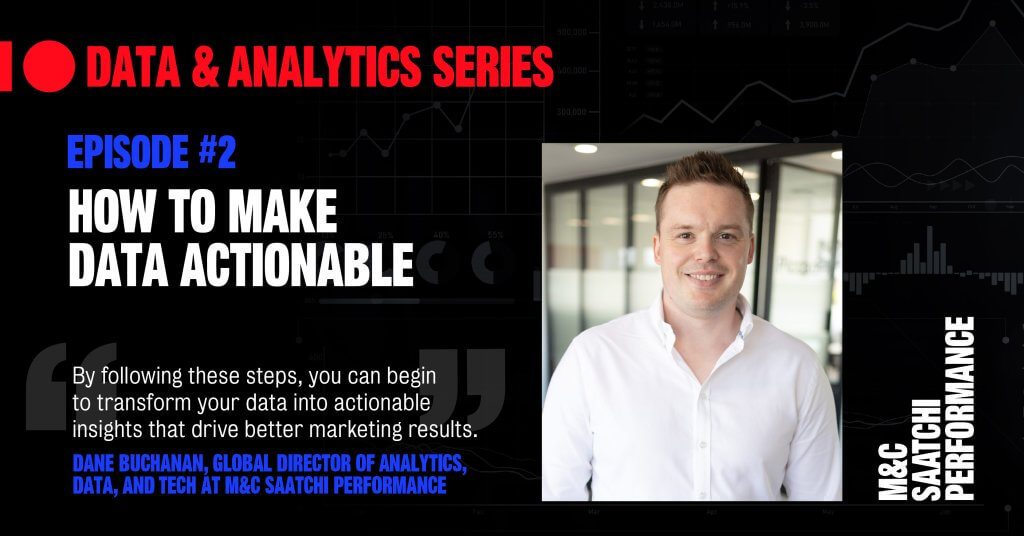
In the second installment of our Data Analytics series we are digging into how to make data actionable, you can read the first piece in the series here. In addition, you can find out more about how we help clients overcome data and analytics pain points on our website.

DANE BUCHANAN
GLOBAL DIRECTOR OF DATA, ANALYTICS & TECH, M&C SAATCHI PERFORMANCE
“Many brands have lots of data, but that doesn’t mean they have lots of answers. Data must be actionable for it to be useful”.
Of course, depending on the business type data availability may be vastly different. A business with a high frequency of use, e.g. a social media platform or a subscription service will have the opportunity to collect data often, whereas a business that has a low frequency, such as an insurance provider or travel business will have a lower rate of purchase. In both instances, ensuring data is collected and stored correctly so it is not just compliant with regulations but is available to marketers is essential.
“As marketers, it’s crucial to understand what data to collect, where it’s coming from, and which channels to use. If you’re uncertain about where to begin, don’t worry; conducting a data and tech audit is our recommended starting point. This process can help you pinpoint gaps in your data strategy and identify the necessary tools and processes you need to bridge these effectively to create actionable data.
Dane Buchanan, Global Director of Data, Analytics & Tech, M&C Saatchi Performance
SEVEN STEPS TO CREATE ACTIONABLE DATA
#1 Set clear objectives and KPIs
Define specific goals that align with your business objectives to focus your data collection and analysis.
#2 Ensure data quality
Tackle data issues early on to prevent skewed results and inaccurate conclusions.
#3 Automate processes
Use automation tools to streamline data collection, analysis, and reporting – freeing up time for analysis and strategic tasks.
#4 Data Segmentation
Break down data into smaller, more targeted groups to identify patterns and trends that can inform your marketing decisions.
#5 Create data visualizations
Use charts, graphs, and other visual tools to make data more understandable and accessible to decision-makers – focus on data storytelling.
#6 Use Dashboards Wisely
Avoid “Death by Dashboard” by ensuring your dashboards contain actionable insights and serve as a reliable source of truth.
#7 Test and iterate
Continuously test, measure, and refine your marketing strategies based on data-driven insights to optimize performance.

By following these steps, you can begin to transform your data into actionable insights that drive better marketing results.
“Remember, every piece of marketing activity should have an impact on ROI, either in the short or long term. If it’s not impacting your bottom line over either of these timeframes then it shouldn’t be on your media plan. Keep refining strategies using data-driven insights for optimal results.”
Dane Buchanan, Global Director of Data, Analytics & Tech, M&C Saatchi Performance
KEY TAKEAWAYS
In order for marketers to really take advantage of the data available to them there may be some steps required. This could seem overwhelming to start off with, but when broken down into stages the overall task becomes more manageable. Ensure to bring key stakeholders in early and gain their buy-in with changes that will be required. This can take time, so starting as soon as possible is important, before even more data signals start to disappear, e.g. when cookies vanish. If you are uncertain about where to start or don’t work with a trusted internal team or third party to guide you, then don’t hesitate to reach out if you’d like us to refine these steps for your business through an initial data & tech discussion.


